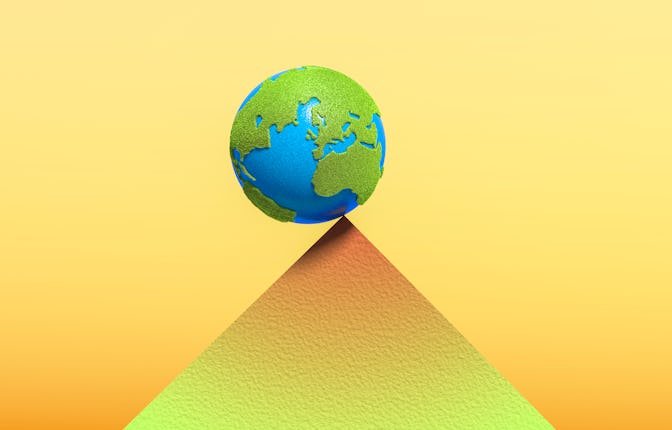Two new climate reports paint a dire picture for the future of humanity
We are rapidly approaching a number of “tipping points” that will change our world forever.

How’s your week going, like as an individual? Because collectively, things are not looking great for us. Two new studies published this week — one in the journal Science and one issued by the World Meteorological Organization — suggest that we are racing dangerously close to climate tipping points that will bring untold destruction. But you know, other than that, you all good?
Let’s start with the findings of the “United in Science” report, which tapped experts from a number of agencies including the United Nations, Global Carbon Project, and Urban Climate Change Research Network to look at where the planet is heading in the coming years. Their findings are ... not super encouraging. For starters, the last seven years were the hottest on record. And things aren’t going to get better any time soon.
Back in 2017, most of the world signed on to the Paris Climate Agreement and promised to do their best to keep the planet from warming above 1.5 degrees Celsius above pre-industrial levels. According to the findings of the United in Science report, we’ve basically got a coin flip of a shot at staying under that threshold in the next five years.
Granted, crossing the threshold doesn’t mean we’ll stay there — but it doesn’t bode well that we’re already brushing up against the target ceiling for temperature rise a full two-plus decades before the deadline. Plus, the new report found that we’re unlikely to get back under that 1.5-degree bar based on current climate pledges — including the United States’ increased commitment to addressing the crisis.
So where does that leave us? Well, check in with the Science report for what might be coming. This report focuses on tipping points — major ecological events that we are unlikely to be able to reverse, should they come to pass. Just passing the 1.5-degree threshold might be enough to trigger four of these events, according to the study.
Those outcomes include the complete collapse of ice sheets off the coast of Greenland and the West Antarctic, the complete loss of warm water coral reefs, and widespread thawing of permafrost across the globe. Not every one of these will occur immediately, but we’ll reach the point where recovery becomes unfeasible — we’ll have pushed these ecosystems to the brink, and they won’t return to full strength.
That’s not great! Even worse is the study warns that we’re likely to continue weighing down the scales with our ongoing greenhouse gas emissions well beyond other tipping points, too: the study finds we’re on track to see between two to three degrees of warming.
The scientists behind the study offer one tipping point we should actually aim for, though: a social tipping point that pushes the public to prioritize reducing greenhouse gases and transitioning to a clean energy future. At this point, the type of pressure that a massive social movement can create might be the only thing that can tip the scales back in the direction needed to avoid those catastrophic outcomes.